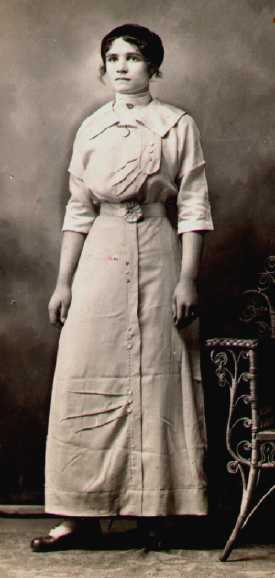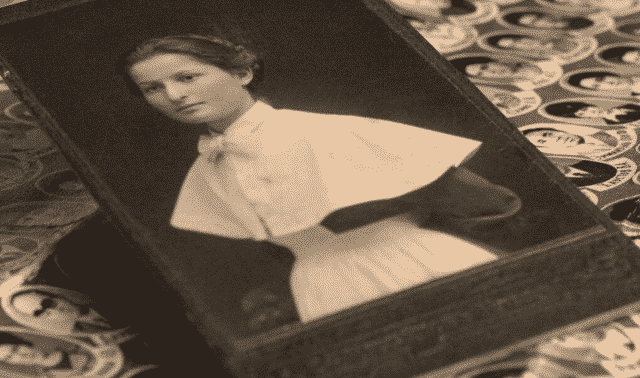Sign up for the Family Tree Newsletter! Plus, you’ll receive our 10 Essential Genealogy Research Forms PDF as a special thank you.
Get Your Free Genealogy Forms
"*" indicates required fields
Sometimes photographs submitted to this column come with extensive explanations of the images while others are accompanied by a plaintive question for clues to identify the person and time frame. In this case, the owner, James Burroughs, would like to know when it was taken to help him assign a name to this image.
This full length portrait of a young woman is full of clothing details, from her small hat down to her shoes. Each part of clothing fits the period prior to World War I. A tentative time frame is 1912-1915. While there is a wealth of detail in the image, certain costume clues pinpoint a date better than others. When dating women’s clothing, there are several key features that assign a time frame:
- Length of skirt: In the 20th century the length of a woman’s skirt helps determine when the picture was taken. Skirts were floor-length at the turn of the century and grew shorter as the century progressed. In this image, taken in the decade from 1910 to 1920, skirt lengths began to change from longer at the beginning of the decade to mid-calf by the end of it. Her skirt shows only her shoe from the ankle down. Fashion plates from clothing catalogs show shirts shorter than this, but most women stayed with a more conservative length.
- Neckline styles: The shape and size of collars present on a woman’s dress place an outfit within a particular time frame. In this case necklines also changed during the 1910s. She is wearing a high collared lace shirt reminiscent of an earlier period. However, the square collar of her tailored dress places the dress mid-decade.
- Accessories: The items a woman selected to wear with her outfit can sometimes pinpoint an exact year. This woman chose to accessorize her dress with a simple bar pin and a watch. Since both of these were common choices for young women, they don’t help with dating the image. However, her hat is indicative of the style worn around mid-decade. At the beginning of the decade women’s hats were oversized, but from 1912 to 1915, some women wore much smaller styles that resembled turbans with a simple decoration. Although not clearly visible in this image, her hat has a fabric rosette to match the ones on her dress. She pulled several tendrils of hair from under the hat to frame her face and soften the effect. Her two-tone shoes or boots are of a style advertised in a B. Altman catalog from 1915.
This young woman chose her clothing carefully for what may have been her first grown-up portrait. She wore a fashionable dress with a high waistline that is gathered with a fabric band and a rosette. Buttons as a design element were popular in the early 20th century. Here they appear as ornamentation to highlight the placket leading from the collar as well as the center seam of the dress. A few well-placed pleats in the bodice and the skirt add interest to the dress.
There is no doubt that this young woman thoughtfully put together this outfit. Her concern over her appearance and the outcome of the photograph shows in her expression. The date of this image is quite clearly 1912 to 1915.




